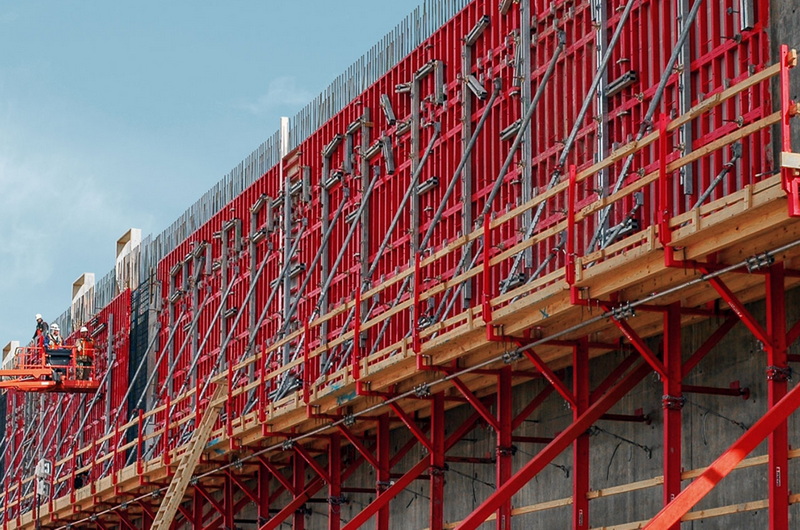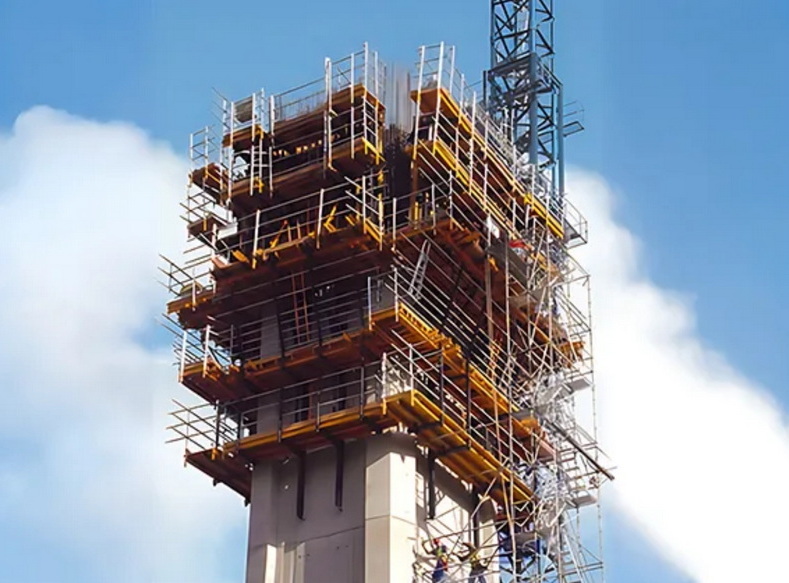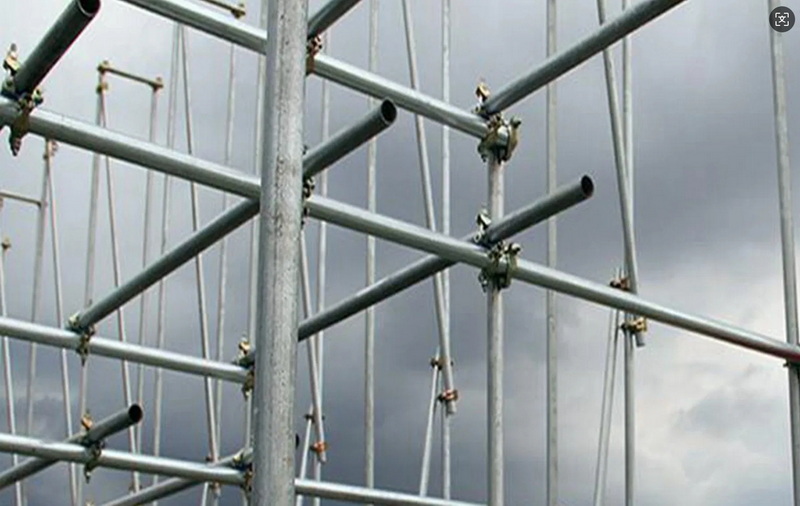Content Menu
● Enhanced Vertical Access and Worker Mobility
● Time and Labor Savings
>> 1.Rapid Installation and Dismantling
>> 2.Reduced Manual Handling
● Safety Advancements
● Adaptability to Complex Projects
>> 1.Customizable Configurations
>> 2.Weather Resilience
● Cost Efficiency Over Time
● Case Study: High-Rise Construction with Self-Climbing Systems
● Future Trends in Climbing Scaffolding Technology
● Conclusion
● FAQ
>> 1. How do climbing systems handle uneven building surfaces?
>> 2. What is the maximum load capacity of mast climbers?
>> 3. Are climbing systems suitable for low-rise projects?
>> 4. How do weather conditions impact climbing platforms?
>> 5. What training is required for operators?
● Citations:
Modern construction projects demand solutions that balance speed, safety, and cost-effectiveness. Climbing scaffolding systems—such as mast climbers, self-climbing platforms, and rail-guided systems—have emerged as transformative tools for large-scale projects. These systems enhance vertical access, reduce labor costs, and streamline workflows, making them indispensable in high-rise and complex builds. Below, we explore their key advantages, supported by industry data and practical examples.

Enhanced Vertical Access and Worker Mobility
Climbing scaffolding systems eliminate bottlenecks caused by traditional scaffolding or ladders. By providing stable, adjustable platforms, workers and materials move seamlessly between levels. For instance:
- Mast climbers allow simultaneous transport of workers, tools, and materials, reducing downtime by up to 60% compared to ladder-based systems[3][7].
- Self-climbing systems integrate hydraulic or mechanical lifts, enabling platforms to ascend autonomously as the structure grows[9][36].
Time and Labor Savings
1.Rapid Installation and Dismantling
Climbing systems require fewer components and anchor points than traditional scaffolding. A 20-story mast climber can be operational within three days, whereas conventional scaffolding might take weeks[13]. Modular designs also simplify reconfiguration, cutting labor costs by up to 30%[15].
2.Reduced Manual Handling
Platforms with integrated material-handling mechanisms minimize manual lifting. For example, mast climbers can hoist 350–500 lbs of materials per trip, reducing worker fatigue and repetitive strain injuries[5][37].
Safety Advancements
Climbing systems prioritize worker safety through:
- Guardrails and anti-slip surfaces on platforms[1][10].
- Automated emergency stops and load sensors to prevent overloading[9][23].
- Reduced fall risks, as workers avoid climbing ladders with heavy loads[7][21].
Studies show that 50% of contractors view mast climbers as safer than traditional scaffolding[3], contributing to fewer accidents and insurance claims.

Adaptability to Complex Projects
1.Customizable Configurations
Climbing systems accommodate irregular building shapes, tight urban sites, and historical structures. For example:
- Rail-guided systems adjust to curved facades or bridge pylons[11][39].
- Single or twin mast climbers fit narrow spaces while maintaining stability[10][14].
2.Weather Resilience
Unlike scaffolding, which often requires disassembly in high winds, climbing platforms withstand harsh conditions. Their compact base and secure ties minimize wind exposure[10][14].
Cost Efficiency Over Time
While initial costs for climbing systems may exceed traditional scaffolding, long-term savings arise from:
- Faster project completion due to reduced setup and adaptation time[13][15].
- Lower maintenance—durable components like galvanized steel outlast wooden planks[8][15].
- Minimal site footprint, reducing rental costs for urban projects[10][15].
Case Study: High-Rise Construction with Self-Climbing Systems
A 40-story skyscraper in Chicago used a self-climbing scaffolding system to:
- Cut vertical access time by 45% compared to tube-and-coupler scaffolding.
- Reduce labor costs by $120,000 through automated platform adjustments[20][36].
Future Trends in Climbing Scaffolding Technology
Innovations like AI-powered load monitoring and drone-assisted inspections are reshaping the industry. Companies like PERI and ULMA now integrate IoT sensors into platforms to predict maintenance needs and optimize workflows[11][39].
Conclusion
Climbing scaffolding systems revolutionize construction efficiency by merging safety, adaptability, and cost savings. As high-rise projects dominate urban landscapes, these systems will remain critical for meeting deadlines, reducing risks, and maximizing ROI. Contractors who adopt climbing technologies position themselves at the forefront of modern construction practices.

FAQ
1. How do climbing systems handle uneven building surfaces?
Rail-guided and modular systems adjust to curves, angles, and recesses using flexible joints and customizable brackets[11][36].
2. What is the maximum load capacity of mast climbers?
Most mast climbers support 500–1,000 lbs per platform, with heavy-duty models exceeding 2,000 lbs[5][14].
3. Are climbing systems suitable for low-rise projects?
Yes—compact mast climbers and veneer scaffolding optimize efficiency for buildings under 10 stories[6][30].
4. How do weather conditions impact climbing platforms?
Systems with wind-rated components (e.g., aluminum masts) operate safely in gusts up to 28 mph[10][23].
5. What training is required for operators?
Certification programs cover installation, load management, and emergency protocols, typically requiring 8–16 hours[12][28].
Citations:
[1] https://scaffoldingrentalandsales.com/blog/maximizing-efficiency-with-scaffolding-stair-towers-on-large-construction-projects/
[2] https://www.actionscaffold.com/post/rise-above-the-rest-with-mast-climbers-unveiling-their-hidden-benefits
[3] https://troweltrades.net/2018/11/13/what-are-the-advantages-of-mast-climbing-work-platforms/
[4] https://www.youtube.com/watch?v=SZ9kVbbuUUw
[5] https://www.youtube.com/watch?v=B5szUWCOpQk
[6] https://www.concreteconstruction.net/business/management/how-scaffolding-affects-productivity_o
[7] https://www.apel.co.in/mast-climbing-work-platforms-the-benefits-of-faster-access-to-work-areas.html
[8] https://maksanlift.com/en/advantages-of-mast-climbing-work-platforms-over-scaffolding/
[9] https://www.youtube.com/watch?v=sol4R4tiwTU
[10] https://www.youtube.com/watch?v=dgxt_Qmcoek
[11] https://www.youtube.com/watch?v=Ntd-JSFwPvc
[12] https://www.youtube.com/watch?v=bhURaIY9Kr8
[13] https://www.barbourproductsearch.info/what-are-the-advantages-disadvantages-of-mast-news116879.html
[14] https://alimak.com/us/mast-climbing-platforms-for-enhanced-efficiency-and-flexibility-english-2/
[15] https://bftmastclimbing.com/hidden-costs-scaffolding-vs-mast-climbers/
[16] https://meva.net/en-us/climbing-formwork/
[17] https://masonrymagazine.com/blog/2022/07/11/scaffold-how-it-impacts-your-workforce-and-productivity/
[18] https://masonrymagazine.com/blog/2015/07/22/mast-climbing-scaffolding-expanding-our-world/
[19] https://www.concreteconstruction.net/_view-object?id=00000154-255e-db06-a1fe-775eeae50000
[20] https://www.linkedin.com/pulse/why-we-choose-self-climbing-scaffold-system-building-kitsen
[21] https://www.sunbeltrentals.com/resources/blog/working-at-height/mast-climbing-platforms-productivity/
[22] https://www.getoformwork.com/industry-news-articles/self-climbing-platform-improving-construction-efficiency/
[23] http://www.osha.gov/etools/scaffolding/supported/mast-climbers
[24] https://www.istockphoto.com/photos/climbing-scaffolding
[25] https://www.shutterstock.com/search/climbing-scaffolding
[26] https://www.istockphoto.com/photos/high-worker-climbing-scaffolding
[27] https://www.youtube.com/watch?v=ufFU2wfJlUU
[28] https://www.freepik.com/free-photos-vectors/climbing-scaffold
[29] https://www.facebook.com/100064194486271/videos/gt-18-self-climbing-platform-scaffolding/1980952365539579/
[30] https://www.facebook.com/advantagescaffold/videos/the-p-series-mast-climbing-platform-is-the-perfect-tool-for-smaller-jobs-that-re/1043601225841378/
[31] https://www.alamy.com/stock-photo/hanging-scaffolding.html
[32] https://www.facebook.com/unitedtoolandfastener/videos/metaltech-has-unveiled-its-new-climb-n-go-motorized-scaffold-system-httpswwwutan/864741374526968/
[33] https://www.facebook.com/TntEquipmentCompany/videos/this-compilation-features-our-1-pro-series-24ft-mast-climbing-scaffold-unit-2-mp/426416907157620/
[34] https://www.alamy.com/stock-photo/scaffolding-platform.html
[35] https://www.youtube.com/watch?v=O0tBeR4KKT0
[36] https://www.linkedin.com/pulse/formwork-revolution-enhancing-construction-efficiency-abhishek-mishra
[37] https://masoncontractors.org/2016/04/12/raising-the-bar-on-scaffolding-and-mast-climber-safety/
[38] https://www.shutterstock.com/search/system-scaffolding
[39] https://www.ulmaconstruction.com/en/ulma/media/videos/project-videos/self-climbing-systems-projects






















